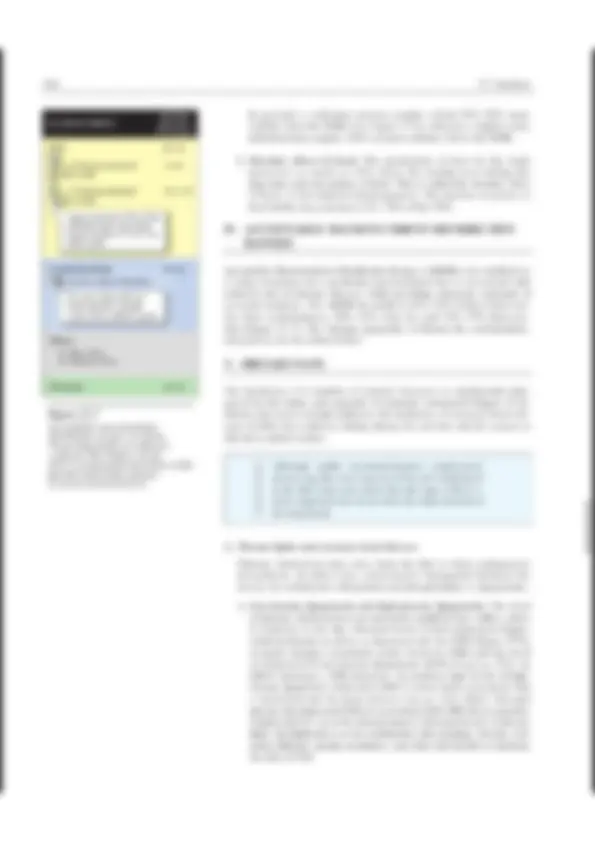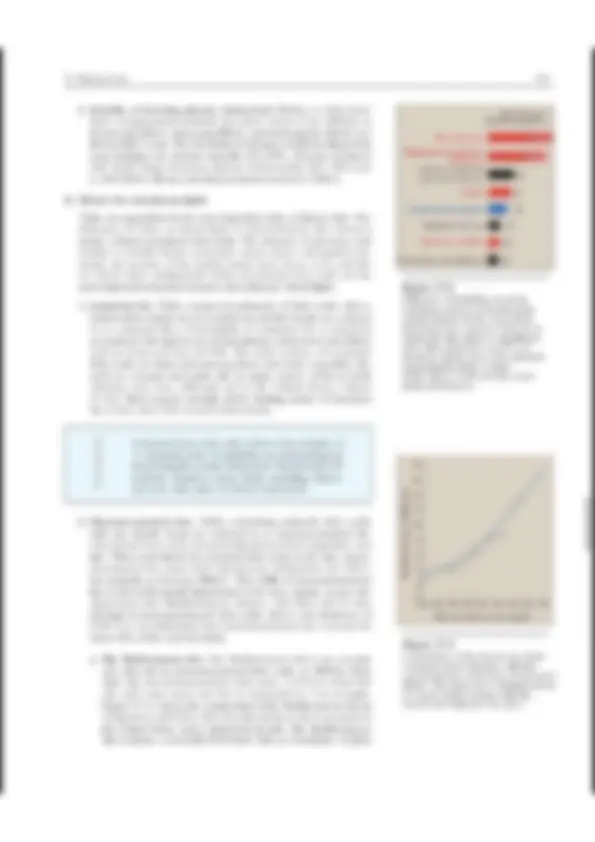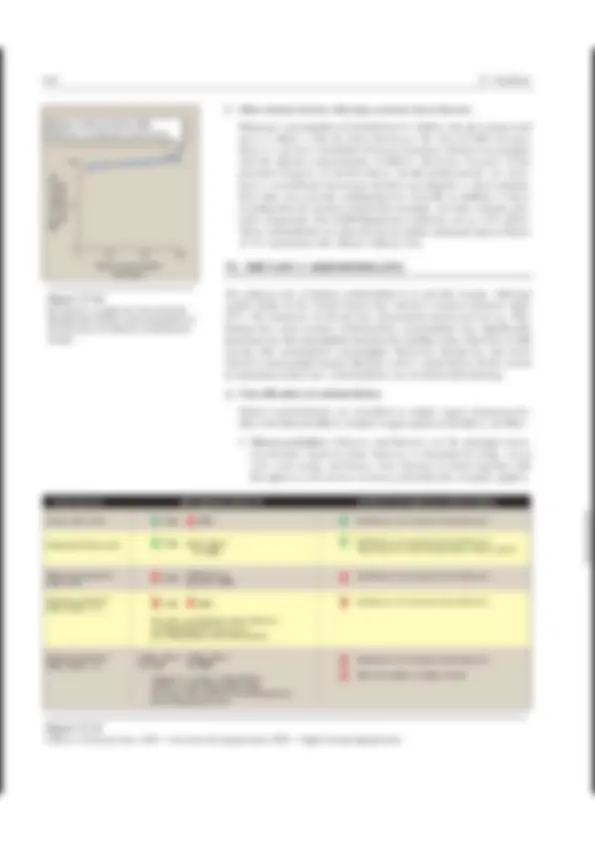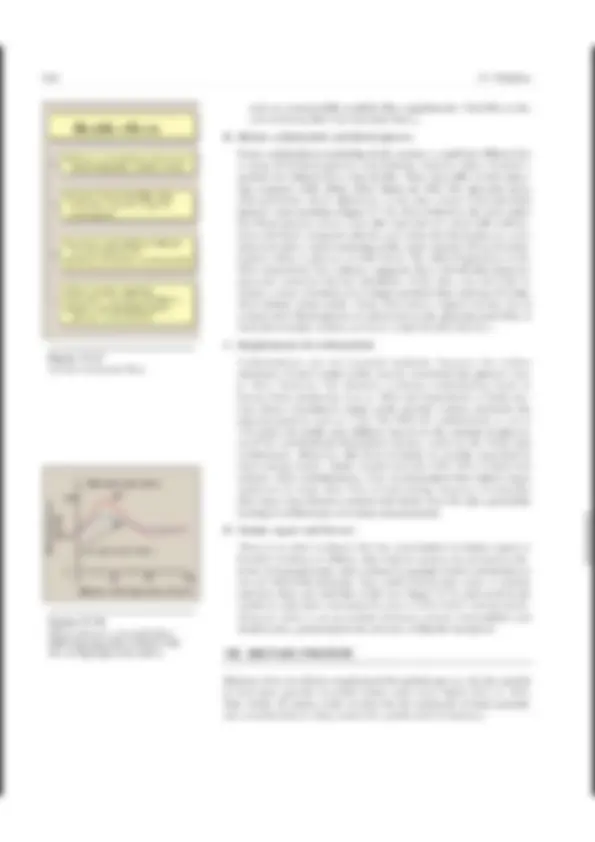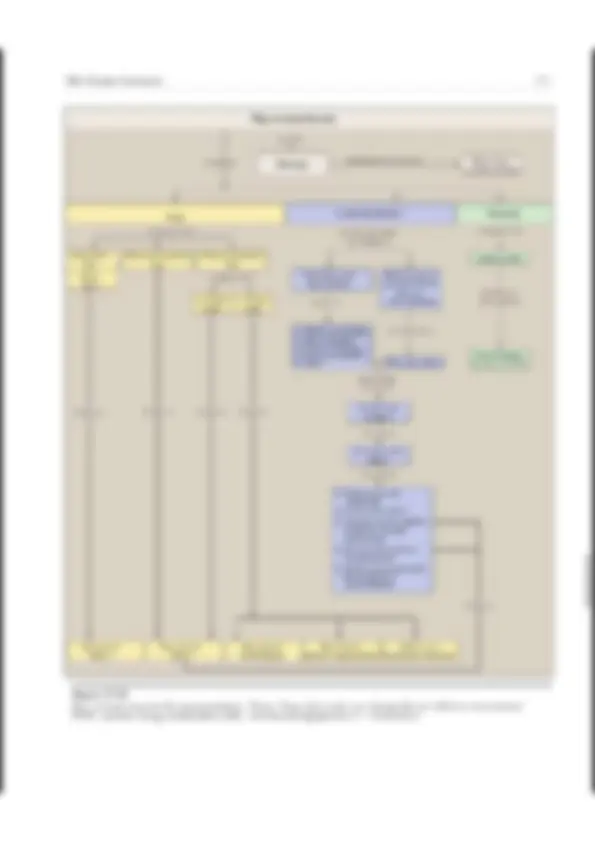Partial preview of the text
Download Sistema cardiovascular and more Cheat Sheet Cardiology in PDF only on Docsity!
Nutrition L OVERVIEW Nutrients are the constituents of food necessary to sustain the normal functions of the body. All energy is provided by three classes of nutrients: fats, carbohydrates, and protein, with ethanol providing calories in some diets (Figure 27.1). Because the intake of these energy-rich molecules is larger than that of the other dietary nutrients, they are called macronutri- ents. This chapter focuses on the kinds and amounts of macronutrients that are needed to maintain optimal health and prevent chronic disease in adults, Those nutrients needed in lesser amounts, vitamins and minerals, are called micronutrients and are considered in Chapter 28. IL DIETARY REFERENCE INTAKES Committees of U.S. and Canadian experts organized by the Food and Nutrition Board of the Institute of Medicine of the National Academy of Sciences have compiled Dietary Reference Intakes (DRIs), which are estimates ofthe amounts of nutrients required to prevent deficien- cies and maintain optimal health and growth, The DRI expands on the Recommended Dietary Allowances (RDAs), which have been published with periodic revisions since 1941. Unlike the RDA, the DRI establishes upper limits on the consumption of some nutrients and incorporates the role of nutrients in lifelong health, going beyond deficiency diseases. Both the DRI and the RDA refer to long-term average daily nutrient intakes, because it is not necessary to consume the full RDA every day. A. Definition of Dietary Reference Intake The DRIs consist of four dietary reference standards for the intake of nutrients designated for specific life stage (age) groups, physi- ologic states, and gender (Figure 27.2). 1. Estimated Average Requirement: The average daily nutrient intake level estimated to meet the requirement of one half of the healthy individuals in a particular life stage and gender group is the Estimated Average Requirement (EAR). It is useful in estimat- ing the actual requirements in groups and individuals. 2. Recommended Dietary Allowance: The RDA is the average daily dietary intake level that is sufficient to meet the nutrient require- ments of nearly all (97%-98%) individuals in a life stage and gender group. The RDA is not the minimal requirement for healthy individuals, but it is intentionally set to provide a margin of safety for most individuals. The EAR serves as the foundation for setting the RDA. If the standard deviation (SD) of the EAR is available and the requirement for the nutrient is normally distributed, the RDA is set at 2 SDs above the EAR (that is, RDA = EAR + 28 Dear). Chapter 27 Energy sources © Carbohydrates © Fats rotein Essential fatty acids Figure 27.1 Essential nutrients obtained from the diet. [Note: Ethanol is not considered an essential component ofthe diet but may provide a significant contribution to the daily caloric intake of some individuals.] Estimated Average Requirement Recommended Dietary Allowance Adequate Intake Tolerable Upper Intake Level Figure 27.2 Components of the Dietary Reference Intakes (DRI). 

